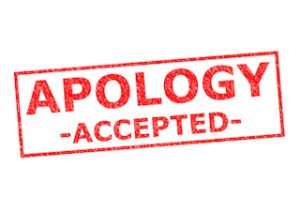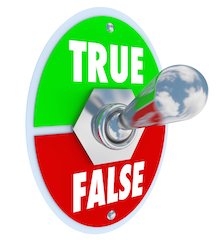I’ve often said the vast majority of financial advisors are ethical and would no sooner rip off Grandma or Grandpa than lop off their own right arm.
However, it’s also fair to say a much larger percentage of advisors have ethical or compliance lapses through ignorance, inattention, or just sheer sloppiness. This is especially true regarding the development and use of advertising materials.
In fact, the use of non-compliant advertising is the regulatory issue that never dies. Every few months, staffers at the National Ethics Association read of a state regulator reminding licensees of basic advertising requirements. Yet despite these insistent bulletins, the use of problematic advertising goes on.
In response, we’ve compiled some basic rules for insurance advertising. If you know these already, please click on another article. However, we urge you to quickly scan the list to make sure you aren’t missing anything. This is important because advertising is a powerful tool for establishing initial prospect (and ultimately client) expectations. If your content misleads them into expecting something other than what they’ll receive, you’ll set yourself up for complaints, lawsuits, and errors-and-omissions insurance claims. Life’s too short to deal with such nastiness!
With that, let’s get started.
- Remember that advertising is a broad concept. According to the National Association of Insurance Commissioners, it’s any communication “designed to create public interest in life insurance or annuities, or in any insurer, or in an insurance producer; or to induct the public to purchase, increase, modify, reinstate, borrow on, surrender, replace, or retain a policy.” Bottom line: if you’re trying to get someone to think something or do something, it’s advertising.
- The types of advertising are equally expansive. They range from brochures, flyers, and lead cards to newspapers ads, telephone scripts, and seminar invitations and everything in between. Again, if your content is trying to persuade someone to do something or think a certain way, especially leading to a sale, it’s advertising.
- If your ad content references a company’s products, even without naming the company, you must submit the content for company review before actually using it in the field.
- If a piece is approved, but you end up changing the copy, you need to get another approval.
- It’s best to seek company approval early in the production process, not late. For example, you’re better off submitting a script for a TV ad than the actual produced spot, since changing the script will be much less expensive than reshooting the spot.
- The NAIC Model Advertising Regulation does not distinguish between consumer advertising and advertising targeting producers. Consequently, you should also file advisor recruitment ads, along with sales concepts and visuals used in sales training, for company review.
- The content of your ads must be completely accurate, objective, and free of misleading information.
- Your ads should not omit material facts the consumer needs to understand how a product works or whether it’s suitable for his or her needs. In this regard, it’s important not to omit key conditions that must exist for someone to receive benefits under the policy.
- Always fully identify the product you’re promoting, including the company underwriting it, the product type (annuity) and the product sub-type (variable annuity).
- If you use a company’s trade name in an ad, always include the full legal name somewhere else in the ad.
- Never suggest that the company or product being promoted is related to any government agent or benefit program.
- When citing facts about a company’s financial condition, size, or investment portfolio, double check to make sure all data is correct and up-to-date. The same is true for all discussions of company ratings.
- In prospecting, always fully identify yourself as a “licensed insurance agent” or “licensed insurance professional” and state the reason for your approach (to discuss the sale of life insurance, annuities, etc.). Avoid titles such as “investment advisor” or “securities representatives” unless you are properly licensed to sell such products and offer services.
- Statistical data used to trigger interest or strengthen arguments must be fully sourced, including the origin of the information (researcher, author), name of publication, and issue date.
- Avoid statements of opinion or if you must express one, clearly label it as such.
• Have a comment about these tips or your own suggestions to ensure your messaging is compliant? Please share it on this new thread: 25 Ways to head off non-compliant communication
16. Avoid using language or charts or graphs that lead a prospect to draw an incorrect conclusion.
17. The product you’re promoting must be insurance department-approved in the state in which you’ll run the ad. If the ad will be used in multiple states and it isn’t approved in all states, then state that in the ad.
18. Advertising that discusses non-guaranteed policy elements such as interest rates must make clear the element isn’t guaranteed and must also state the guaranteed value for that element.
19. All charts or illustrations that project future values must explicitly state they do not represent actual amounts to be paid in the future. Content must also describe all elements that might impact such values such as surrender charges, cap rates, and market value adjustments.
20. When discussing the tax implications of purchasing or holding an insurance product, explain the basis of for such statements. Also provide a caveat stating that the discussion doesn’t constitute legal or tax advice and that the consumer should consult with his or her own attorney.
21. In promoting the sale of annuities, refrain from using terms such as “CD annuity,” “certificate of annuity,” “investment account,” or “savings plan.”
22. Never say “deposits” or “contributions” when you mean to say “premiums.”
23. Avoid words that suggest the best or ultimate value, including “highest,” “lowest,” “safest,” “unique,” unless you can factually support your claim.
24. Avoid disparaging your competitors, either companies or other financial professionals, in your advertising.
25. Finally, when it comes to developing insurance advertising content, always remember that less is more. The more you stretch to make a point or engage in hyperbole, the harder it will be to get your ad produced. And if by chance it does get produced, the more likely it will generate complaints orerrors-and-omissionsproblems.
For further information about advertising compliance, please consult with your firm, FMO, or insurance-company compliance department.
• Have a comment about these tips or your own suggestions to ensure your messaging is compliant? Please share it on this new thread: 25 Ways to head off non-compliant communication
Harry J. Lew is Chief Content Officer at the National Ethics Association and EOforLess. For more information on affordable errors and omissions insurance for low-risk financial advisors, visit E&OforLess.com. For information on ethical sales practices, please visit the National Ethics Association’sEthics Center













